Animals seen (new in bold):
- At least 5 thousand gnu, running through a river valley with
- At least a thousand zebra, including adorable brown-striped baby zeebs
- A few hundred more Thomson gazelle, mostly at a distance though vs yesterday
- A hundred or so “Superb Starlings” with glorious iridescent plumage
- A couple dozen Masaai giraffe
- A couple dozen Cokes Hartebeest
- Around a dozen ostriches, mostly black and white males but a few brown speckled females
- 11 cheetahs!!! The highlight of the day
- 10 lions – but only one male with 3 concubines. Six females were alone many kilometers away, lying in the shade
- 5.25 dikdik antelopes
- 3 elephants – 2 bulls and 1 female
- 3 silver jackals
- 3 Secretary birds
- 2 Marabou storks
- 2 red-beaked hornbills
- 1 hyena. Technically we saw one yesterday, at a distance, but it could have also been dead, and/or a log.
- 1 Bateleur Eagle
- 1 (living) leopard tortoise, 1 empty shell with several missing plates
- 1 industrious dung beetle at our campsite, who Christine adored.
We awoke early this morning at 6:30am, ate a quick breakfast and were in the car and heading towards Ndutu. Almost immediately, we saw a small family of giraffes at a distance and I started snapping pictures that are pretty terrible. I wasn’t sure how many more we’d see. But over the next hour of driving we saw at least a dozen more striding through the acacia trees, delicately sucking the leaves off. We were joined by strikingly beautiful chirping blue birds, who Paul said were called Superb Starlings. What a name! We later saw them on the ground, fighting over scraps of bread and cackling. They ran like little robins – head down, focused, then stopping and popping back up to stare around at everything.
When we reached Ndutu, we dropped off Nicholas at our campsite – called Hugo Campsite after a European who had spent many years here documenting the wildlife – this seems to be a common theme. He would be preparing all the tents and cooking the food. Christine found a little dung beetle pushing a ball of its namesake, and followed it along its journey of…three more feet. It dug a little hole in the ground, dragged its ball of dung in after it, and disappeared. Christine promptly named her Rebecca and set up a bunch of rocks in a pile nearby so we could check on her progress later.
We descended into a shallow valley that stretched Northwest/Southeast as far as we could see. It was filled with the Great Migration, the most numerous of all of Tanzania’s wild animals, the gnu, and their companion zebras. A couple of hideously ugly storks stood on a nearby bank. Their beaks were so mottled and speckled with grey and brown, and they had huge pink bladders/sacks under their beaks.
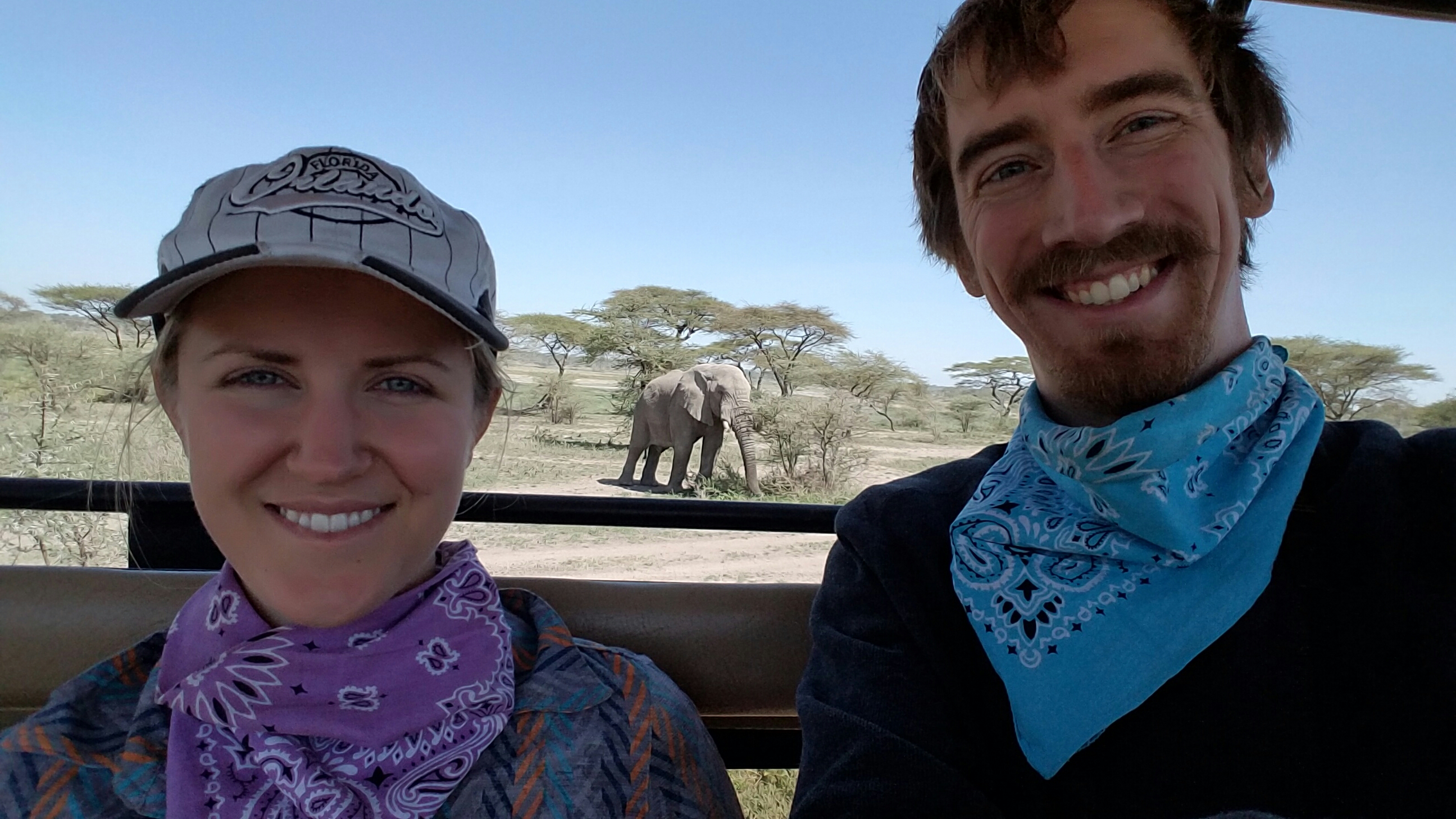
The front facing camera on the S7 is ridiculously poor but it does the trick, especially on this 3G data plan
The prey animals stayed down in the valley, but we soon headed back up onto the western bank and saw a photogenic elephant mugging for a couple of tour buses. Paul estimated him at about 50 years old, with jagged, slightly broken off tusks. He was wandering a slow circle around an acacia bush (different then the acacia trees the giraffes enjoy), pulling shrubbery off the ground and posing all of his sides for the delighted tourists who had far, far better cameras than me.
Moving on, we came across a pair of cheetahs, and another famous animal could be checked off our list. The pair was lounging on the ground in the shade of a tree, a male and female, with as many as 9 buses around them. They seemed completely nonchalant, only glancing up from licking themselves and snoozing when a bus started up again to leave (and then be replaced by another one barreling in from some other direction. Paul told us the Swahili we were hearing through the radio were the different buses letting each other know what they were finding.)
Later on, on the other side of the valley, we found the cutest possible discovery – a mother cheetah and her cub. Paul estimated the little ball of spotted grey fluff to be about 2 months old. He gazed sleepily at our assembled vehicles, basking in our “awwwws” and nursed his nonplussed mother for a good 15 minutes before the two of them got up and wandered off. We had been wondering where the father was = a few minutes later, Paul spotted him – or at least another young male cheetah, lounging under a different tree about 200 meters away. The two adults had been casting long glances at each other, like they were playing “who can stay mad at the other the longest” with each other.
Note: the next four paragraphs contain some gross stuff, and I’m writing it as descriptively as I saw it. Skip em if you have a sensitive stomach
Another 600 meters or so away, we found the grossest discovery yet – a third adult cheetah, the largest one yet, a female, that was in the process of finishing off the final point two five of a baby dikdik. We parked the vehicle about 10 meters away from her and watched – and listened – to her crunching away on the shoulder. The “good stuff” had been consumed already – all of the internal organs of the torso were long gone. The four skinny legs and pelt were the majority… And the glazed dead black eyes stared almost accusingly at us, jaw hanging slackly open. “I’m a baby dikdik. I’m really cute. You would have rooted for me to win the race, wouldn’t you? But I didn’t. And now you’re watching me be eaten.”
The shoulders were eaten after about 5 minutes… Then the cheetah started on the head, neck first. Paul then admitted this was a first – in his ten years of tour guiding, he’d never seen a cheetah go for a skull. It was the first time he’d told us that he was seeing something new.
The crunching noises took on a more solid sound as the skull was crushed and then yes, the cheetah paused and licked the brains right out. The left eye turned from black to white and popped out as the cheetah chomped that side, working on dislocating the dikdik jaw from its joint – then that half of the dikdik head was gone. Christine shuddered a little bit – I didn’t see her, since we were both intently focused on the cheetah, but she said quietly “I know it’s not, but it almost looks like its tiny little mouth is screaming in pain every time the cheetah takes a bite; it opens and closes like that.” The right eye didn’t have a chance to venture out of its socket – the cheetah, sensing mealtime was almost over, consumed the entire right side of the face in two bites.
The cheetah licked its bloody muzzle and gazed quickly around it. Paul told us that a single cheetah like this would be nervous other animals might try to sneak up and steal its food – or worse, attack the distracted and not-good-in-a-one-on-one fight cheetah. “It’s okay girl, we’re watching out for you,” I told it. The cheetah settled down and licked at the spindly little chopstick legs and pelt that was all that remained. A bit of greasy fat and skin held the fur together, and the cheetah carefully licked it clean. “That’s going to be one hell of a hairball later,” I told her. She didn’t seem to mind, and crunched a leg, showing red-white marrow inside. At long last, she got up, stretched, and walked away at a solemn, stately gait. Paul told us that this was normal – a cheetah can’t win many fights with scavengers like hyenas and would never hang out around the smell of blood which would be sure to be already attracting other meat eaters for miles around.
As we meandered through the trees, I caught a glimpse of the ears of another cheetah and Paul followed my lead – it was five cheetahs sprawled comfortably around a tree, two pairs cuddling each other with their heads resting on each other’s ramps, and one keeping a laissez-faire watch from under what looked like a thorny weeping willow. They still had the little fuzzy mohawk hairdo on their necks denoting them as young, not yet fully grown teens, about 3 years old. It would be another two years before they’d find mates of their own and try to find their own territory, which Paul told us would be about 20km square. “These nine cheetahs are a family unit.” It was likely that the oldest, largest cheetah was a grandmother of one of the cheetahs with the cub, and she might have been the mother of the 5 three year olds. Most litters were of two, but some could be as large as four. But they would certainly be a family unit – cheetahs, unlike any other of the big cats, refuse to eat food killed by anything other than a member of their family unit, and they will fight any other cheetah that enters their territory.
We were happy with our finds for the day – giraffes and cheetahs were Tanzanian must-sees. Between our two cheetah families, Paul had headed up out of the valley to the far west, where we found a strange and to me, somehow sad sight – an ancient bull elephant, standing alone in a field. Paul said this was unusual – they like trees, not empty plains. The bull had a single magnificent and huge tusk on his left side, but his right tusk was ripped clean out – not a single piece of it remained. Paul estimated him at 50-55 years old, out of an average lifespan of 60. I thought of the (likely fictional) stories from Kipling’s elephant graveyards…an ancient wise beast, heading off alone to a place no human will ever find, ready to let his body become food for the earth. Or just a slightly senile ol’ boy enjoying the sunlight and brush grass and going to meet his family the next valley over. One of those two. Probably.
We broke for lunch under an acacia, no animals in sight (besides an ostrich strutting eastward toward the valley and ignoring us) and Paul climbed carefully out and walked seriously around the truck, staring at the ground. He was looking for snakes, he said – in the southern hemisphere near the equator “most of them” are poisonous. Also scorpions. Hurray! We chose to eat inside the truck.
Afterward, we took a meandering route back across to where we’d later meet the cheetahs which would keep our attention for a couple hours. On the way, Paul’s keen eye found a single hyena, brown and muscular, sunning himself on a pile of dirt. When he heard us stop nearby he got up and walked away, displaying a…six inch long penis hanging limply from his belly, practically dragging along the underbrush. “Aren’t they normally pack animals?” I asked Paul. “His friends probably abandoned him because of his weird gross penis,” Christine retorted. Poor hyenas; she never forgave them for their part in overthrowing Mufasa.
The sun starting to throw the truck’s long shadow to the east, we hurried back to the camp where Nicholas had a delicious dinner waiting – the courses just kept coming and coming. Coffee and bread to start, with a zucchini ginger soup, followed by breaded fish, breaded potato chunks, and a vegetable stew. An avocado salad, and finally freshly sliced mangoes for dessert. Fruit is a typical dessert here and since it took 45 minutes for the courses to all appear it was the only way to know when we would be done eating! Nicholas did not eat with three of us – he was working hard over the portable stove.
Christine went and checked on Rebecca the dung beetle. She now had a nice, 4 inch tall mound of dirt where her hole had been before, which Christine praised her for. She had been reading in our guidebook that the dung beetle helps keep the fields clean, happily rolling away the mountains of poop the zebras and gun create and making fertile soil for plant life. Go dung beetles!
Paul settled in and told us some important rules for “Bush camping” like we’d be doing tonight. No shoes outside the tent – the hyenas will eat them. When leaving the tent for the call of nature, sweep flashlight both right and left, looking for reflecting eyes looking back at you. No food or even toothpaste or shampoo in the tent – anything with strong smells. It attracts hyenas. I laughed a bit at this. Paul met my gaze. “I am not joking,” he said in his soft voice. “No food in the tent or in the night it is you who will cry.” Paul is a blunt guy, and I appreciate that. I urged him – begged might be a better word – to continue. Trust me, Paul, I am listening to every word. I really don’t want to screw this up.
Sadly, as diligent readers might guess from my lack of posting on the day of, Airtel has let me down. We had barely left Karabu the previous day before 3G and even Edge speeds vanished, leaving me with a strong voice signal but no data. You live and learn, I’ll write a quick post at the end of this laying out where I had data and where I didn’t so other travelers might choose different carriers while traveling to the same places or using the same tours.
For now, goodnight! Here’s hoping the hyenas don’t find my breath too fresh.
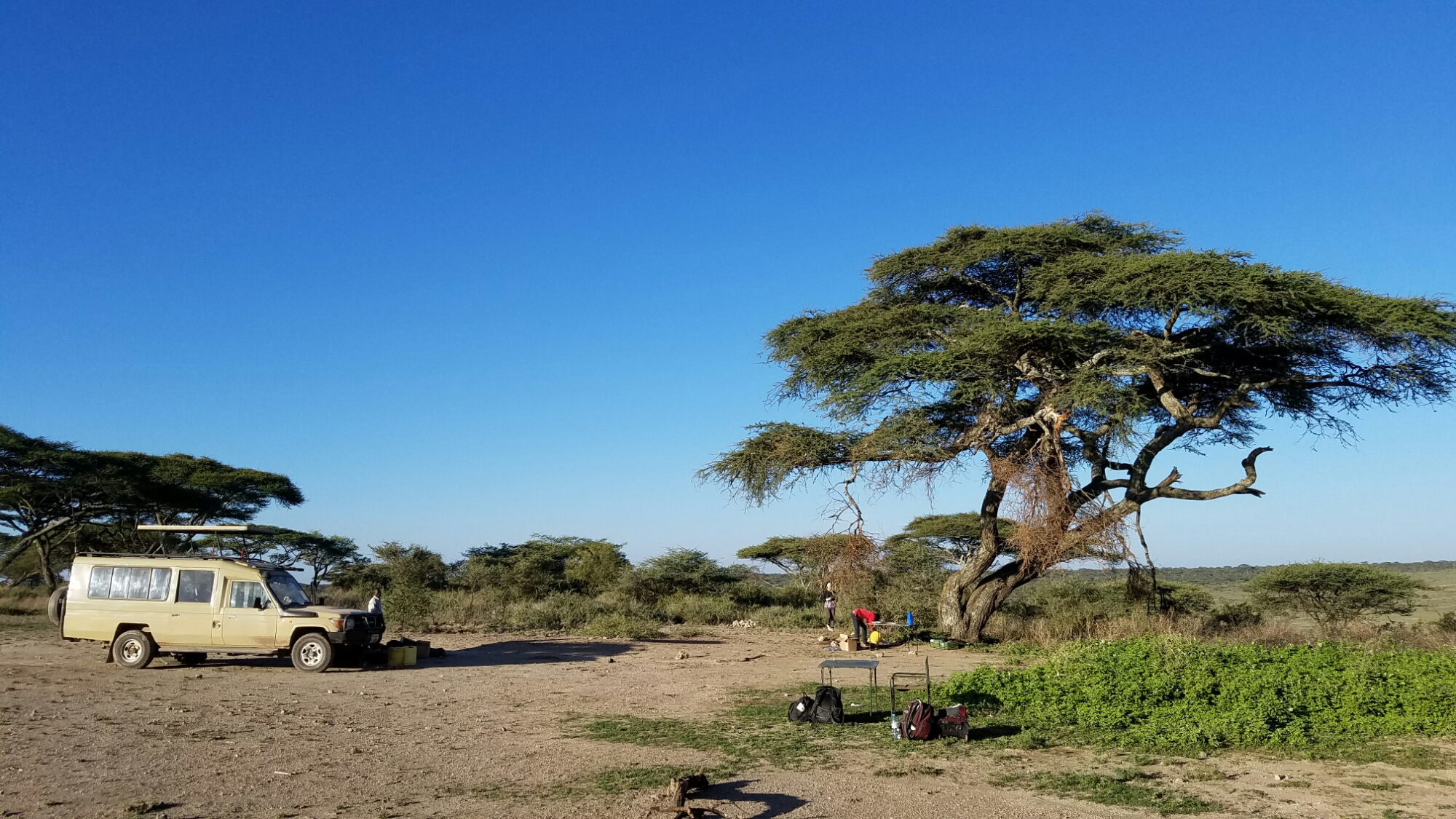
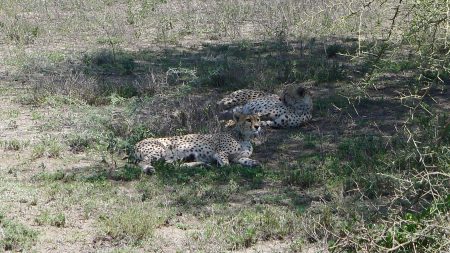
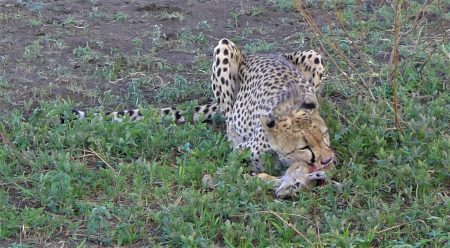
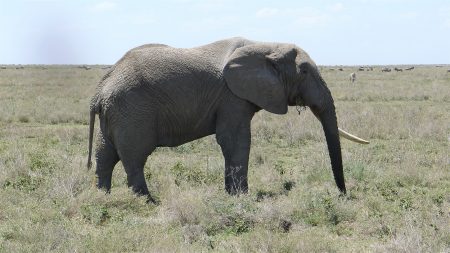
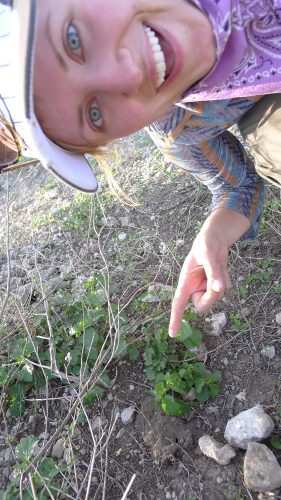
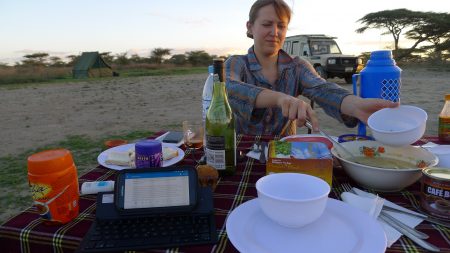


No one has commented on this post - please leave me one, I love getting feedback!
Follow this post's comments, or leave a Trackback from your site